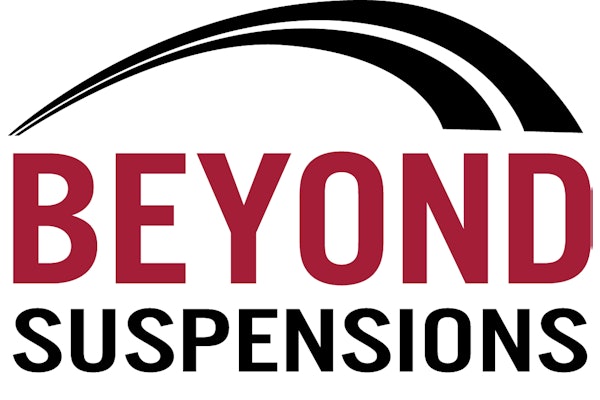With its horseshoe shape and prominent placement, the fifth wheel may be one of the most easily discernable parts on a truck. Its maintenance also may seem simple: Keep it clean and keep it greased.
The fifth wheel may not have an abundance of parts, but the parts that do comprise it suffer severe strain as they work together to perform their main function of uniting trailer and tractor. But this connection is far from static. Often the trailer needs to move independently of the tractor and this is where proper fifth wheel lubrication comes into play.
“The fifth wheel is the key component that allows the trailer to pivot easily back and forth when the truck is in motion and aids in making turns. Obviously, when the driver makes a turn, the trailer needs to follow, and a properly lubricated fifth wheel helps make this possible,” said John Geyer, industrial marketing specialist, Chevron Products Company.
The connection between the fifth wheel and the tractor is a metal-to-metal mating. If there was no lubrication between these two surfaces, incredible levels of friction would develop.
“Without lubricant, you would create higher degrees of friction, which, in turn, would lead to increased metal-to-metal wear between the trailer plate and fifth wheel,” said Geyer.
But it’s not just the flat fifth wheel plate that needs to be lubricated. Close attention also must be paid to the device’s other moving parts.
According to Dan Arcy, technical marketing manager, Shell Lubricants, “there actually are several areas that need to be lubricated on the fifth wheel. You mainly look at the top of the fifth wheel, but there are other components of the fifth wheel where it actually slides. The locking and unlocking mechanism also requires lubrication.”
If close attention is not paid to fifth wheel lubrication, costly damage will occur. “An improperly lubricated fifth wheel can lead to a binding condition or high wear of the connecting points between the trailer pinion and fifth wheel jaws,” cautioned Mark Betner, heavy-duty lubricant manager, CITGO Lubricants.
“In the long run, if the fifth wheel is not lubricated properly, more service inevitably will be required,” he said.
The oil industry experts all agreed that a fifth wheel’s lifespan depends on how well it’s lubricated, but differing opinions were offered as to how often the wheel should be relubricated after the initial grease application and about what type of grease should be used.
Some experts recommended that the fifth wheel be cleaned and lubricated every time the trailer is detached from the tractor, while others said that it depends on the severity of the environment in which the truck has been operating. But echoing through everyone’s statements is that close attention should be paid to the manufacturers’ recommendations.
“A fifth wheel maintenance routine includes proper application of lubrication at every service inspection and periodic adjustments to the fifth wheel itself,” said Betner.
Geyer believes that a good practice is to apply new grease each time the trailer is unhitched from the tractor.
“Before regreasing occurs, be sure the fifth wheel surface is clean. If the tractor has run without the trailer attached for some amount of time, the surface of the fifth wheel may have accumulated road dirt and debris. Wipe the surface properly, making sure that no visible dirt or road chips are present,” he said.
The idea behind fifth wheel grease application is to start with a clean surface, then to apply an even layer of grease. When cleaning the fifth wheel surface, a clean rag is your best tool. Avoid using solvents because if they mix with the lubricant upon reapplication, they could cause issues down the road.
“When applying the new grease, I like to see a back and forth, wavy pattern used on the surface of the fifth wheel with waves being about an inch or so apart,” said Geyer. “When lubricating a fifth wheel, I start at the back and move toward the front, ensuring that the first three-quarters of the fifth wheel, back to front are coated.
“The reason why I typically do not recommend coating the last front quarter section of the wheel is because as the trailer slides into position during the hitching process, the mating plate of the trailer will push the grease along in front of it. If you use too much grease, the excess grease will be pushed forward and slide off the front of the fifth wheel, resulting in a waste of grease,” he explained.
“Leaving the front quarter of the fifth wheel plate without grease will help prevent this. Enough lubricant still will be pushed ahead by the trailer plate to properly cover the remaining quarter of the fifth wheel,” Geyer said.
There was some debate among the experts Truck Parts & Service consulted as to what type of grease is best for fifth wheel lubrication. Products tailored to fifth wheels are available. These products are said to have properties that promote fifth wheel adherence and protection.
However, some experts said that a high quality grease used on a chassis is perfectly acceptable, even if not specifically formulated for the fifth wheel.
Whether you choose conventional grease or one that is specially formulated, it’s vital to adhere to the manufacturer’s recommendations when lubing and relubing fifth wheels.
Keep these important connectors lubricated and free of debris and your customers will enjoy increased uptime.








